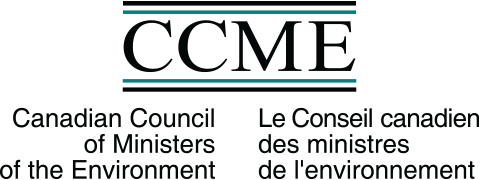Chloride
Chemical Groups: Inorganic
Also Known As:
CASRN: 16887-00-6
Water Quality Guidelines for the Protection of Aquatic Life
Freshwater
Short Term Concentration (µg/L) 640,000 µg/L or 640 mg/L
Chloride toxicity to freshwater organisms was evaluated using tests with both CaCl2 and NaCl salts.
Derived with severe-effects data (such as lethality) and are not intended to protect all components of aquatic ecosystem structure and function but rather to protect most species against lethality during severe but transient events (e.g. inappropriate application or disposal of the substance of concern).
Long Term Concentration (µg/L) 120,000 µg/L or 120 mg/L
Chloride toxicity to freshwater organisms was evaluated using tests with both CaCl2 and NaCl salts.
Derived with mostly no- and some low-effect data and are intended to protect against negative effects to aquatic ecosystem structure and function during indefinite exposures (e.g. abide by the guiding principle as per CCME 2007).
The long-term CWQG may not be protective of certain species of endangered and special concern freshwater mussels (as designated by the Committee on the Status of Endangered Wildlife in Canada, or COSEWIC). This specifically applies to two species; the wavy-rayed lampmussell (Lampsillis fascialo) (COSEWIC 2010a) and the northern riffleshell mussell (Epioblasma torulosa rangiana) (COSEWIC 2010b) (Table 2). The wavy-rayed lampmussel is indigenous to the lower Great Lakes and associated tributaries, specifically western Lake Erie, the Detroil River, Lake St. Clair and several southwestern Ontario streams. The northern riffleshell mussel is indigenous to the Ausable, Grand, Sydenham and Thames River in Ontario, as well as the Lake St. Clair delta. Discussion with provincial regulators should occur if there is a need to develop more protective site specific values.
Date 2011
Marine
Short Term Concentration (µg/L) NRG
NRG = no recommended guideline.
Long Term Concentration (µg/L) NRG
NRG = no recommended guideline.
Date 2011
Water Quality Guidelines for the Protection of Agriculture
Irrigation
Concentration (µg/L) Variable
Foliar damage
= 100-178 mg/L for almond apricots and plums
= 178-355 mg/L for grapes, peppers, potatoes and tomatoes
= 355-710 mg/L for alfalfa, barley, corn, and cucumbers
>710 mg/L for cauliflower, cotton, safflower, sesame, sorghum, sugar beets, and sunflowers
Rootstocks
= 180-600 mg/L for stone fruit (peaches, plums, etc.)
= 710-900 mg/L for grapes
Cultivars
= 110-180 mg/L for strawberries
= 230-460 mg/L for grapes
= 250 mg/L for boysenberries, blackberries, and raspberries
No fact sheet created. For more information on this guideline, please refer to Canadian Water Quality Guidelines (CCREM 1987).
Date 1987
Livestock
Concentration (µg/L) No data
Date No data
Sediment Quality Guidelines for the Protection of Aquatic Life
Freshwater
Concentration (µg/kg dry weight) ISQG No data
Concentration (µg/kg dry weight) PEL No data
Date No data
Marine
Concentration (µg/kg dry weight) ISQG No data
Concentration (µg/kg dry weight) PEL No data
Date No data
Soil Quality Guidelines for the Protection of Environmental and Human Health
Concentration (mg/kg dry weight) Agricultural No data
Concentration (mg/kg dry weight) Residential/ parkland No data
Concentration (mg/kg dry weight) Commercial No data
Concentration (mg/kg dry weight) Industrial No data
Date No data
Tissue Residue Quality Guidelines for the Protection of Widlife Consumer of Aquatic Biota
Concentration (µg/L) No data
Date No data
Groundwater Quality Guidelines for the Protection of Environmental and Human Health
(Coarse Soil) Concentration (mg/L) - Agricultural/Residential No data
(Coarse Soil) Concentration (mg/L) - Commercial/Industrial No data
(Fine Soil) Concentration (mg/L) - Agricultural/Residential No data
(Fine Soil) Concentration (mg/L) - Commercial/Industrial No data
Date No data
